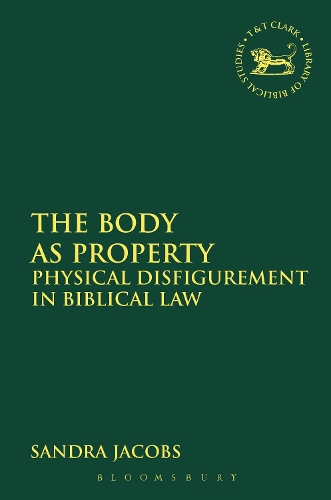
The Body as Property: Physical Disfigurement in Biblical Law
(Hardback)
Available Formats
Publishing Details
The Body as Property: Physical Disfigurement in Biblical Law
By (Author) Dr. Sandra Jacobs
Bloomsbury Publishing PLC
T.& T.Clark Ltd
10th April 2014
United Kingdom
Classifications
General
Non Fiction
Criticism and exegesis of sacred texts
Old Testaments
221.6
Physical Properties
Hardback
280
Width 156mm, Height 235mm
567g
Description
The Body As Property indicates that physical disfigurement functioned in biblical law to verify legal property acquisition, when changes in the status of dependents were formalized. It is based on the reality the cuneiform script, in particular, was developed in Sumer and Mesopotamia for the purpose of record keeping: to provide legal proof of ownership where the inscription of a tablet evidenced the sale, or transfer, of property. Legitimate property acquisition was as important in biblical law, where physical disfigurements marked dependents, in a similar way that the veil or the head covering identified a wife or concubine in ancient Assyrian and Judean societies. This is primarily substantiated in the accounts of prescriptive disfigurements: namely circumcision and the piercing of a slave's ear, both of which were required only when a son, or slave, was acquired permanently. It is further argued that legal entitlement was relevant also to the punitive disfigurements recorded in Exodus 21:22-24, and Deuteronomy 25:11-12, where the physical violation of women was of concern solely as an infringement of male property rights.
Reviews
This book succeeds in shedding light on a fascinating topic. The author engages very well with Mesopotamian evidence of different kinds and displays an impressive knowledge of later rabbinic materials. This book is well researched . . . and will prove a good resource for scholars -- T. M. Lemos, University of Western Ontario, Canada * Journal of Theological Studies, vol. 65 *
Reviewed -- Peter J. Leithart * Trinity House *
Author Bio
Sandra Jacobs is lecturer in the department of Theology and Religious Studies at King's College London, UK.
